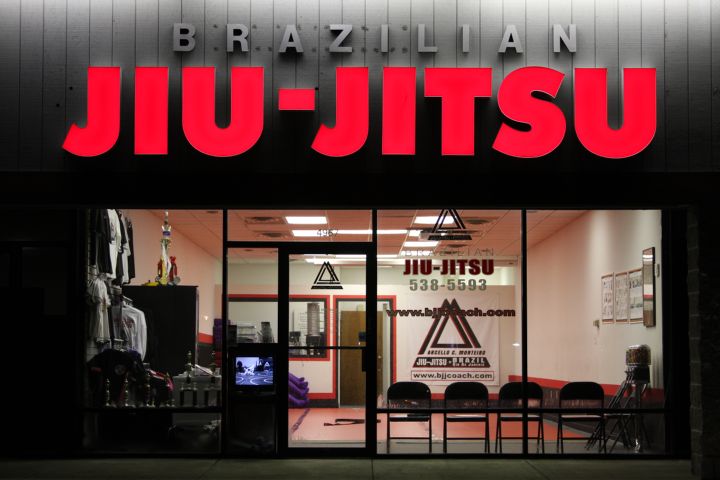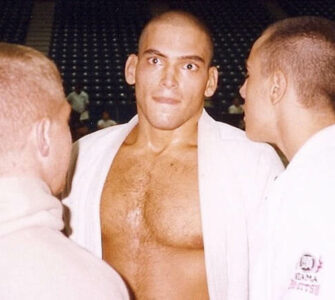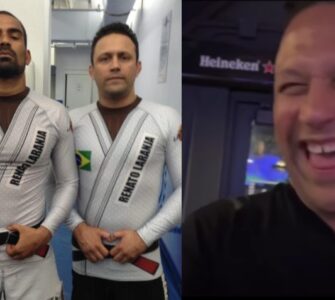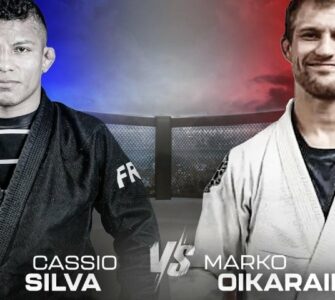Guest post from Thomas Nadelhoffer the Grumpy Grappler, an Associate Professor of Philosophy, Psychology, and Neuroscience at College of Charleston (SC). When he’s not enjoying time with his wife and pups in the lovely lowcountry, he’s obsessed with the grappling arts. He has traveled the country and the world as part of his ongoing jiu jitsu journey and he hopes to do more exploring soon.
I don’t always see eye to eye when it comes to Ryron and Rener Gracie and the way they run Gracie University (see here and here for some intra-familial criticisms). But I nevertheless appreciate what they’ve tried to accomplish when it comes to spreading the art of jiu jitsu and I respect the passion and enthusiasm that they usually display when talking about the gentle art. I find their video posted below entitled, “What exactly is a jiu jitsu blue belt?” especially illuminating. Indeed, I think this admittedly lengthy discussion (clocking in as it does at 40+ minutes) is a must see not just for those who are thinking about getting into jiu jitsu, but also for those who are already on their own jiu jitsu journey (especially instructors and gym owners).
One topic that is the focus of their conversation is how to attract and retain new students. As they note, one impediment to getting new students to stick around is the old school approach to teaching and training that is lamentably still prevalent in gyms around the country (and around the world). Let’s call this approach, the “survival of the fittest” mindset when it comes to how to treat new students.
On this view, white belts ought to be subjected to a kind of trial by fire whereby they are thrown on the sacrificial alter of more experienced white belts as well as hungry blue belts and purple belts–who are encouraged to sharpen their own skills on the backs of the uninitiated. This is what can be called ‘Conserving the Art’ where you ‘weed out the weak’. Unsurprisingly, this approach is a recipe for disaster and a sure-fire way of scaring off most of the white belts who step on the mat. After all, when taken to its extreme, this approach puts these white belts in danger right from the start.
As Rener and Ryron point out, when an instructor adopts this mindset–allowing brand new students to spar with students with either no experience or more experience (each of which creates unique problems of its own)–eventually the “savages will surface.” Oftentimes, these surfacing savages are people who are lot like I was when I first stepped onto the mat. I had a wrestling background and a wrestler’s mindset, so while I took my beatings like everyone else, I also started with enough grappling savvy to smash the other newbies in my cohort. And smash them I did–often with the encouragement of the upper belts and even the instructors.
So, while I couldn’t avoid being the nail when rolling with people with more experience, I wasn’t about to pass up on my chance to be the hammer when the opportunity presented itself. In the long run, this wasn’t good for me or my training partners. And ultimately, it fosters a mindset and mentality that is positively bad for the art (and sport) of jiu jitsu.
Unfortunately, it took me several years to unlearn the misguided lessons I learned during the early stages of my own journey. It wasn’t until I found myself at a well-run school with a great instructor (thanks, Seth Shamp at Triangle Jiu Jitsu) that I started to see the error of my savage ways. The goal shouldn’t be to smash people. Rather, the goal should be to work hard to make everyone else around you better (which will in turn make you better). But even with a new-found appreciation for the problem with my attitude–an attitude that had been cultivated, encouraged, and even rewarded at some of the gyms I had been at–it still took a long time for that mindset to loosen its grip on how I approached training. Jiu jitsu is not about finding the savage within. It is about taming the inner beast–strangling it into submission so that technique and respect can replace unnecessary force and the will to dominate.
Our partners are not our stepping stones, they are fellow travelers on a path towards an ever elusive mastery of the art we love. Unless and until we leave behind the old ways of training–that is, until we quit throwing newly minted white belts to the wolves and shepherd and nurture them instead so that they, too, may bring more people into our jiu jitsu families, ours will continue to be a fringe sport with a bad reputation rather than a respected martial art with a important role to play in our communities at large. Or so it seems to me. And so it seems to Ryron and Rener–which is why I highly recommend you take the time to watch the video below.
Dedicate yourself to doing what you can to help spread jiu jitsu. Finding the savage within runs counter to this mission. So, instructors should work hard to design a beginner’s program that fosters the right mindset while giving those new to the art adequate time to develop before they are forced to spread their wings out of fear and duress. Otherwise, these new students will take flight never to return–like so many white belts before them.


















